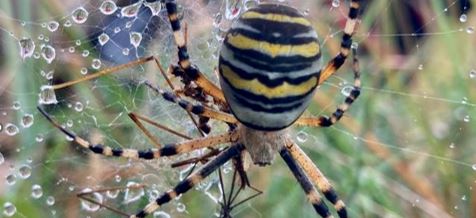Eden Wild Goose Nature
Nature notes from the Focus Magazine November 2021

Changing views
One October day, I noticed that a little sunflower, not planted by us, had finally bloomed in our front garden. It isn’t particularly impressive as sunflowers go and wouldn’t win any prizes for height. Still, I was pleased to see its cheerful little face nodding towards my front window, as if it were saying hello. Sunflowers are comparatively recent arrivals in Europe, having been brought back from the Americas around the sixteenth century. So really, perhaps it shouldn’t be in our native wildflower patch but as I’ve learnt, there is a lot of debate about how long a plant or animal needs to be here before we grant it native status…. A thousand years? Arrived with the Romans? Post ice age? And so on!
One species that really isn’t native to the UK is the little egret, and I always think it’s almost too exotic to be a regular part of our birdlife. I first saw one around twenty years ago, when I was in Hong Kong and was appropriately ‘wowed’ as I watched it delicately picking around in the warm, subtropical, muddy water. In fact, it arrived in Britain back in the 1980’s and ‘90’s and has gradually spread north, becoming increasingly acclimatised as our winters have become less severe. When I volunteered between 2009 and 2018 with the RSPB at the wonderful Burton Mere Wetlands, Wirral, it became a more and more common sight, and now the reserve is home to one of the largest little egret colonies in the UK. It continues its northerly march and I’ve recently been watching two egrets patrolling a stretch of the River Eden opposite our house. Look out for an incredibly elegant small white heron with a long black bill, black legs and yellow feet who is happy to nest in trees like its relative, the grey heron.
We’re all used to hearing these stories of our changing wildlife now, how some species are being pushed further north while others move in from the continent and I encountered another example on my recent holiday near the south coast. We were exploring Keyhaven marshes which overlook the Solent, with great views of the Isle of Wight and the Needles and regular sightings of the IOW ferry and the glamorous yachts that grace the area. I was eating my cheese sandwich while shifting awkwardly on the rather thistly ground below, when I noticed a most alarming looking spider sitting motionless in its web, definitely not one I’d seen before. The cheese sandwich was my priority but then out came the mobile phone for close ups and a quick ID session. (We are so privileged these days.)
Turns out the spider was a female wasp spider (ironically, after last month’s wasp themed thoughts), patterned like a very large wasp to frighten off predators. And thankfully, totally harmless to humans despite its rather scary appearance. The spider has arrived from mainland Europe only recently and is colonising the south, moving further up country gradually… so perhaps it won’t be too many years before we see these wonderful, colourful beasties in our own gardens.
I’m not qualified to remark on the full meaning of these changes, but it strikes me that while in the big picture things can look much the same, if we pay attention, we will see there is a shift. We need to be aware of how the very ground under our feet is changing, and ask and explore the questions that such changes elicit.
Philippa Skinner